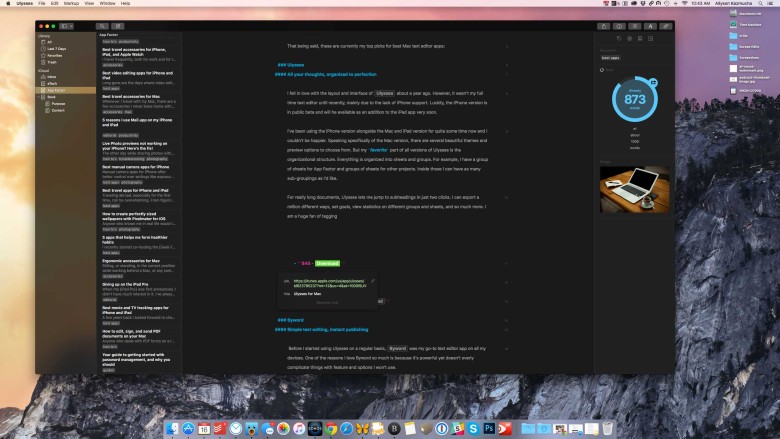Mac Os Enable Text Input For Window


Apple's tight integration of POSIX-compliant file paths and a command line interface, and their historically strong hardware and manufacturing standards have had me on the Mac platform for years. However, Apple's recent disappointing and lackluster focus on MacOS and their hardware, and a Lenovo X1 Yoga, 2nd Generation, has caught my attention. Switching OS's, however, has two seemingly insurmountable areas which concern me. This post focuses on Text-to-Speech OS integration. I've been through the documentation, which I've found unhelpful. Granted, my use-case isn't related to being visually-impaired. One of my use cases is for Narrator to only read selected text, as I outline below.
Full Specifications What's new in version 8.1 Version 8.1: - A full recompilation has been made to be compatible with High Sierra, and as Universal Binary to keep being compatible with both old (PowerPC) Macs and recent (Intel) Macs. - The 'How to intall it?' Best plain text editors for windows and mac. It is available in Dutch, English, French, German, Italian and many other languages.
It also contains various themes to look nice. 
For example in this 2012, the questioner has the same issue, with no satisfactory answer provided. I also wish to emphasize that 'copy and paste into a third party TTS application' is unsatisfactory.
On my Mac, I can provide an input, and get an MP3 TTS file with no user intervention in-between, for my #1 scenario, below. I perform this only with Open Source tools, too, except for the 'say' command. I've long taken advantage of Mac's Text-to-Speech integration. I use it in three specific ways, though a combination of the below defines 90% of my use-cases. • Converting reformatted text from emails that I wish to have read to me at a later time • My current Mac workflow: I copy the source from my email, use a vim script that removes HTML, leaving the text I wish to have read. For example, this script inserts a 'silence' [slnc 2000] command that helps me identify paragraph markers when I listen to the read text.
How To Get Mac Os On Windows
• After text markup is complete, I pass the formatted text through the command, which creates an AIFF of the text-to-speech. • Using, I then convert this to an mp3 and using, push the mp3's to a static public location where my podcast client can retrieve it. • Thanks to bash scripts, the above takes 5 seconds of my time. The last time I switched from Mac to Windows, I dearly missed having this.
Mac Os Enable Text Input For Windows
In the past RDC came with the MacBook and I could copy text from my Mac and paste it into my remote session, and vice versa. However I'm running OS X 10.9 using the latest Microsoft Remote Desktop app and it won't let me cut and paste.
I used in the past, but was always more kludgy than the above. • Live proof-reading of emails or documents I'm creating. I find errors more easily when I have my Mac read my written text back to me.
• Yes, I can copy and past into Notepad, but that's clumsy. Looking at Narrator's interface, I found it very difficult to figure out how to get Narrator to read selected text across applications, i.e., Outlook, Firefox, Word, and so forth. • Using TTS to read selected browser text on long articles I wish to hear while I perform non-attention-demanding tasks. • This is similar to #2, however, I might decide it's worth creating a file for podcast if the read text captures my attention, and I'll shift to a #1 process. • Firefox has a 'reader' mode which largely helps and works well under Windows. My questions are: • Is there an equivalent way to pass a formatted text file on Win10 to an MS binary for processing, similar to the 'say' command on Mac? I see that are TTS specific, thought that seems more kludgy.
• What is the native way to have Windows 10 Narrator read selected text in a fashion as straight-forward as selecting text in any application, invoking a keyboard command, and Win10 perform TTS services? I'm open their may be different but similar ways to do the above. 'Copy and paste into notepad' however is a kludge as well. I'm hoping MS did their accessibility homework and deployment as well as Apple has. Some notes to self as I continue to explore this question • There are several python packages that enable TTS within a python script. At first this looked promising, but there are several fatal issues, focusing on the python methods outlined here: • I had problems installing pyttsx.
I have brew-installed py2.7.13 and py3.6.1 and using pip3 or pip, was unable to successfully install either version. The original pyttsx is py2, with a fork for py3. This is too bad, as the design calls for the python module to use the native TTS engine. If pyttsx worked on python3, and the project were more active, I'd be more amenable to troubleshoot the module's failure.